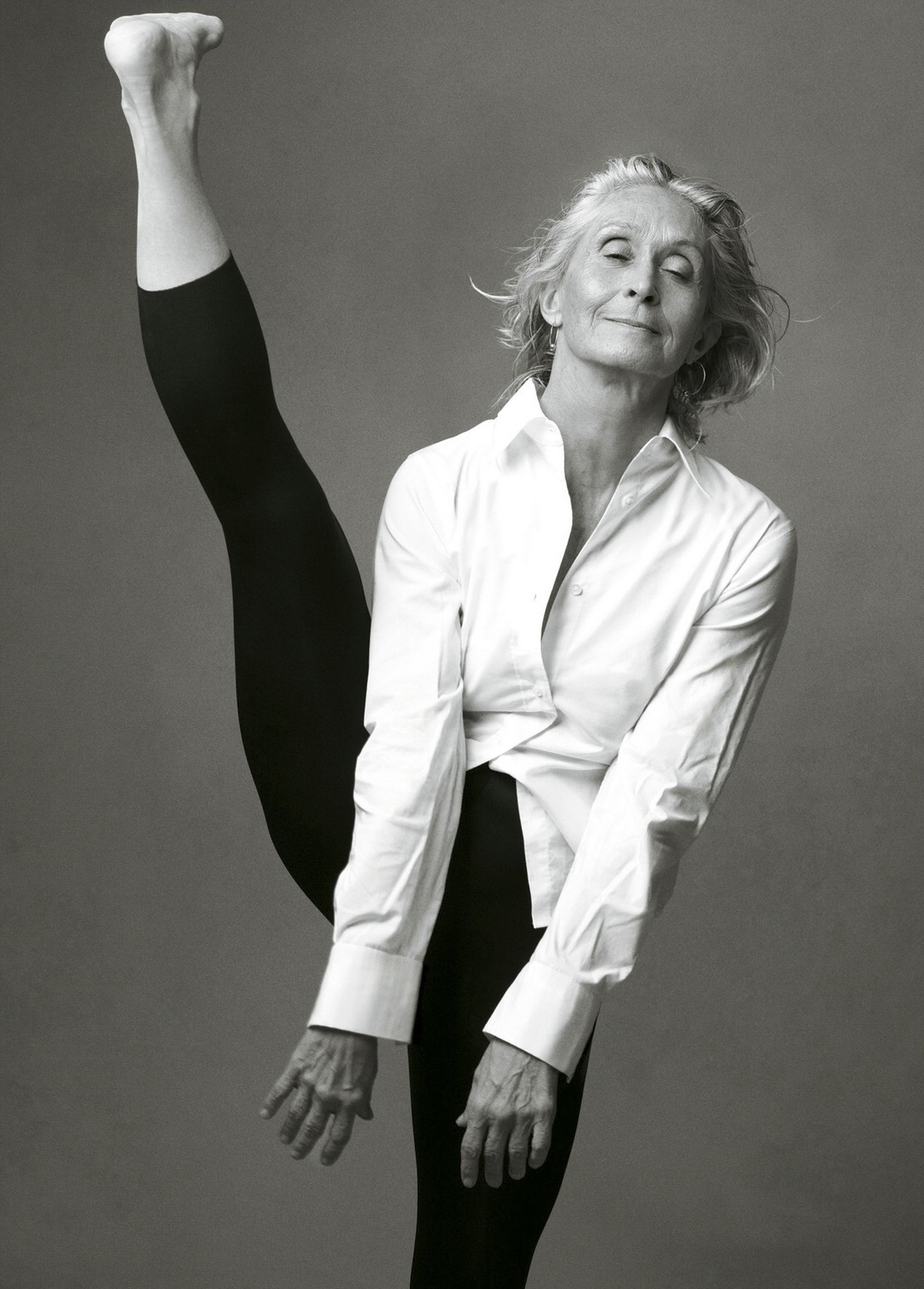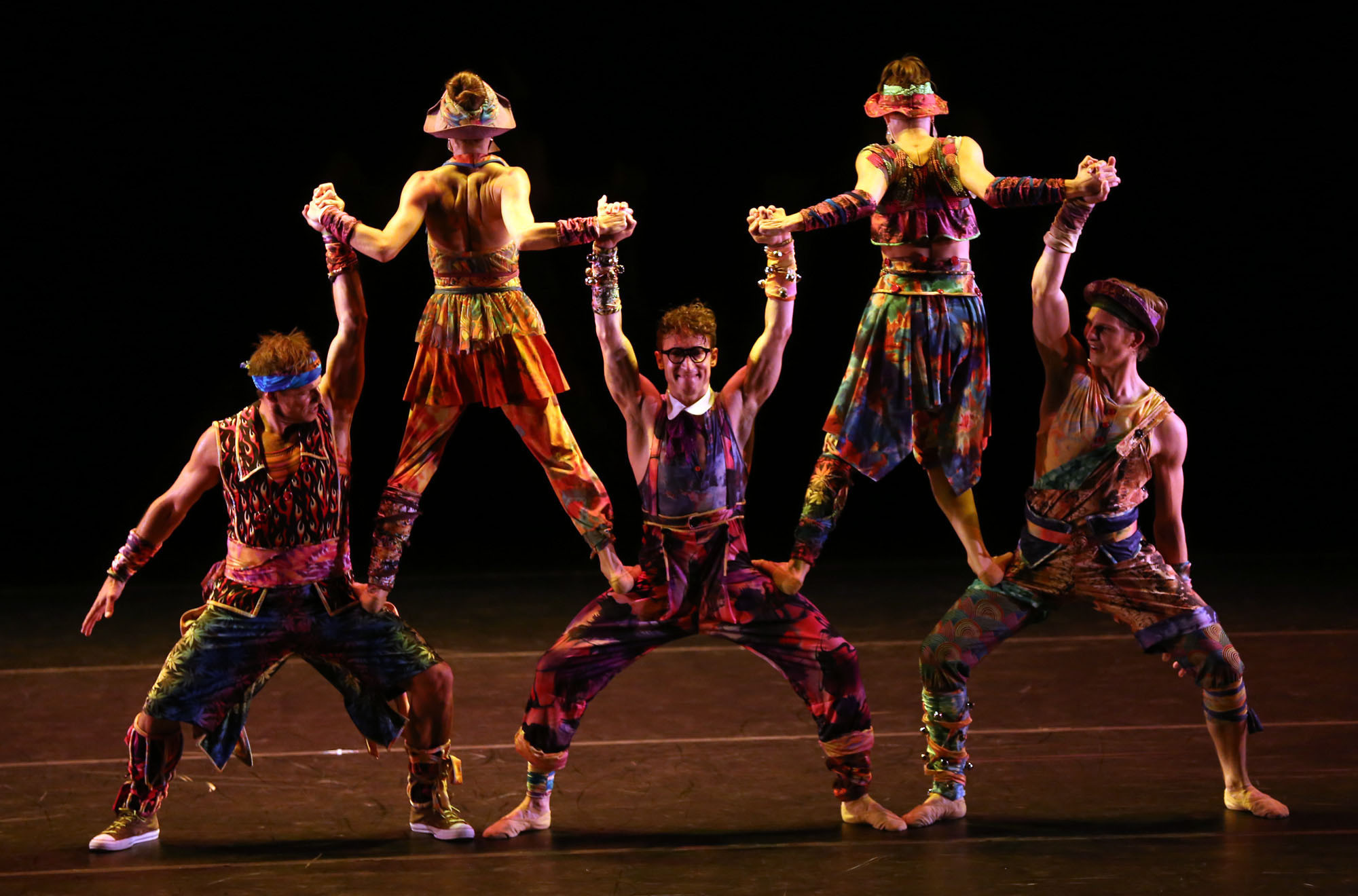Leisure-time physical activity improves cartilage health and quality of life for women with knee OA
Higher leisure-time physical activity (LTPA) level promotes cartilage health in postmenopausal women with mild knee osteoarthritis (OA). This was observed in a study carried out in the Faculty of Sport and Health Sciences at University of Jyväskylä, Finland.

Portrait of Twyla Tharp by Annie Leibovitz. Gap Tries a Somewhat Old-Fashioned Campaign, The New York Times
University of Jyväskylä 14 March 2017
This study investigated the relationship between 12-month LTPA level and changes in estimated biochemical composition in tibiofemoral cartilage.This study was conducted in cooperation with the Central Finland Central Hospital, the Department of Medical Technology, Institute of Biomedicine in University of Oulu, Finland and the Department of Orthopaedics and Traumatology in University of Helsinki, Finland.
Seventy-six eligible postmenopausal women aged 60–68 with knee pain and confirmed radiographic osteoarthritis-related changes in the knee joint were enrolled into this follow-up study. Study participants were divided into three groups based on their average monthly LTPA during the 12-month study period: 1) highest, 2) middle, 3) lowest. Most common LTPA during the study period was walking (including Nordic walking), which the highest LTPA group performed on average three hours per week, middle group one and a half hours per week and lowest group one hour per week.
The effect of LTPA on knee cartilage biochemical composition was measured by T2 relaxation time and dGEMRIC index, MRI methods specifically designed to measure the biochemical composition of the cartilage.
The effects of intermittent impact and compressive loading during gait to knee cartilage may evoke favorable effects in cartilage such as improved fluid flow and nutrient diffusion. Maintaining cartilage health requires daily physical activity, and when performed regularly, walking and Nordic walking together with other activities of daily living can maintain or even improve the quality of knee articular cartilage, says Doctoral student, physiotherapist Matti Munukka.

Dancers perform “Preludes and Fugues” at the Wallis Annenberg Center as part of the celebration of choreographer Twyla Tharp’s 50 years in dance. Genaro Molina Los Angeles Times
| Exercise is an important part of osteoarthritis treatment and maintaining cartilage health |
Exercise is an important part of OA management and it is recommended to people suffering from OA. The role of multiform exercise can be emphasized especially in the early stages of OA when the cartilage damage is still mild and pain and stiffness do not restrain exercising. Exercise has been shown to have positive effects in alleviating pain and improving both physical function and quality of life.
This study showed that a higher LTPA level was able to produce sufficient stimulus to improve the estimated glycosaminoglycan (GAG) content of tibiofemoral cartilage. The role of GAG in cartilage health is to lubricate joints and surfaces and to maintain viscoelasticity. GAG loss is an early feature of OA. The clinical significance of this study is that a regular and sufficiently high LTPA level can improve knee articular cartilage health and quality.
| The research was funded by the Academy of Finland, The Social Insurance Institution of Finland (Kela) and the Finnish Cultural Foundation. |
 Source University of Jyväskylä via Science Daily
Source University of Jyväskylä via Science Daily
| References |
Physical Activity Is Related with Cartilage Quality in Women with Knee Osteoarthritis, Munukka M, Waller B, Häkkinen A, Nieminen MT, Lammentausta E, Kujala UM, Paloneva J, Kautiainen H, Kiviranta I, Heinonen A. Med Sci Sports Exerc. 2017 Feb 25. doi: 10.1249/MSS.0000000000001238. [Epub ahead of print].
| Further reading |
Efficacy of progressive aquatic resistance training for tibiofemoral cartilage in postmenopausal women with mild knee osteoarthritis: a randomised controlled trial, Munukka M, Waller B, Rantalainen T, Häkkinen A, Nieminen MT, Lammentausta E, Kujala UM, Paloneva J, Sipilä S, Peuna A, Kautiainen H, Selänne H, Kiviranta I, Heinonen A. Osteoarthritis Cartilage. 2016 Oct;24(10):1708-1717. doi: 10.1016/j.joca.2016.05.007. Epub 2016 May 19. Full text
Regional dGEMRIC analysis in patients at risk of osteoarthritis provides additional information about activity related changes in cartilage structure, Hawezi ZK, Lammentausta E, Svensson J, Roos EM, Dahlberg LE, Tiderius CJ. Acta Radiol. 2016 Apr;57(4):468-74. doi: 10.1177/0284185115591237. Epub 2015 Jun 24.
Effects of high-impact training on bone and articular cartilage: 12-month randomized controlled quantitative MRI study, Multanen J, Nieminen MT, Häkkinen A, Kujala UM, Jämsä T, Kautiainen H, Lammentausta E, Ahola R, Selänne H, Ojala R, Kiviranta I, Heinonen A. J Bone Miner Res. 2014 Jan;29(1):192-201. doi: 10.1002/jbmr.2015. Full text
Delayed gadolinium-enhanced magnetic resonance imaging of cartilage in knee osteoarthritis: findings at different radiographic stages of disease and relationship to malalignment, Williams A, Sharma L, McKenzie CA, Prasad PV, Burstein D. Arthritis Rheum. 2005 Nov;52(11):3528-35. Full text
Positive effects of moderate exercise on glycosaminoglycan content in knee cartilage: a four-month, randomized, controlled trial in patients at risk of osteoarthritis, Roos EM, Dahlberg L. Arthritis Rheum. 2005 Nov;52(11):3507-14. Full text
